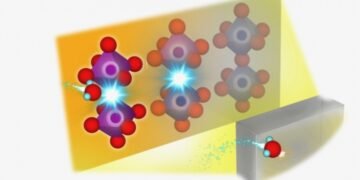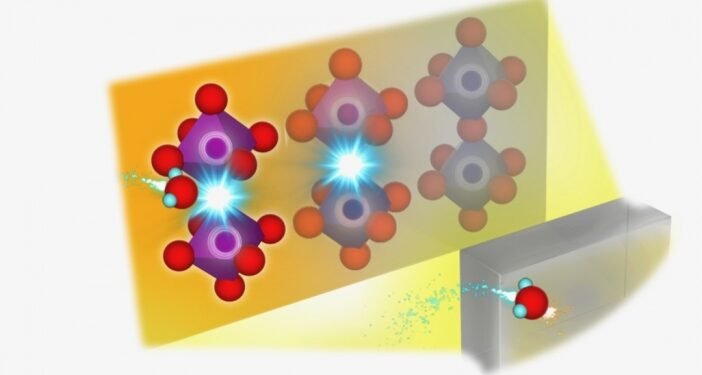Explore where protons go to create better fuel cells, Scientists discovered the chemical properties of a perovskite-based electrolyte they developed for SOFCs.
Establishing the inner workings of fuel oxide cells is difficult through the integration of computational data and manual analysis.
A Solid Oxide Fuel Cell, or SOFC, is a type of electrochemical device that produces electricity using hydrogen as fuel, and the only “waste” is water. Naturally, as we strive to reduce our carbon emissions and reduce losses from climate change, companies and universities have shown great interest in the development of SOFC.
In a move that could improve the development of SOFCs, a research group led by Kyushu University has discovered the chemical properties of a perovskite-based electrolyte they developed for SOFCs. The team combined synchrotron radiation analysis, large-scale simulations, machine learning and thermogravimetric analysis, to reveal the active site where hydrogen atoms are introduced into the perovskite lattice and its energy production process. The results have been published in the journal Chemistry of Materials.
At a basic level, a fuel cell is simply a device that produces electricity by sustaining the splitting of a hydrogen atom into its positively charged proton and negatively charged electron. Electrons are used to produce electricity, then combine with protons and oxygen and produce water as “waste”. At its core is an electrolyte.
This material works like an atomic sieve that allows the transfer of particles directly from the fuel. Depending on the type of fuel, these atoms can be protons or oxygen.
Although SOFC is a term that is not familiar to many people, the technology is marketed in heating systems for single-family homes. However, they remain expensive, one of the obstacles is the high operating temperature.
“Normal batteries should be at 700-1000℃ for the electrolyte to work properly.” said Professor Yoshihiro Yamazaki of Kyushu University Inter/Transdisciplinary Energy Research Platform, who led the research. “In fact, there is a global race to develop SOFC electrolytes that can work at low temperatures of around 300-450 ℃. One such promise is perovskites.”
Perovskites are a class of materials with a crystalline structure that allows them to have unique physical, optical and even electrical properties. Also, since they can be artificially synthesized with different atoms, a great deal of research is focused on developing and testing an almost infinite number of possible perovskites.
One such case is developing better SOFC electrolytes.
“In our previous work, we created a barium-zirconium perovskite with a chemical composition of BaZrO3. By replacing the Zr sites with large amounts of Scandium, or Sc, we were able to create a high-performance electrolyte work. and our target temperature of 400 ℃,” explains Yamazaki. “Actually, that’s only part of what we want to find out. We’re investigating a question that hasn’t been answered for more than three decades: where does the network of electrolytes bring protons?”
Determining the inner workings of a SOFC has been difficult due to its high operating temperature and the flexibility of water, the fuel cell’s hydrogen source.
To avoid these issues, the team conducted X-ray spectroscopy experiments on their perovskite electrolyte using synchrotron radiation – electrical energy emitted by particles – while the fuel is operating at around 400 ℃.
“These results allowed us to understand where protons would be placed in the chemical structure of matter. From there, we apply machine learning and, using a supercomputer, calculate the structure of the object,” Yamazaki continued, while it works.”
“Now that we have a basis in the operation of the electrolyte, we can raise its nanostructures and even come up with new materials that can lead to more efficient fuel cells, and even those that work in wider temperature ranges “, concludes Yamazaki.
Source: Kyushu University





































